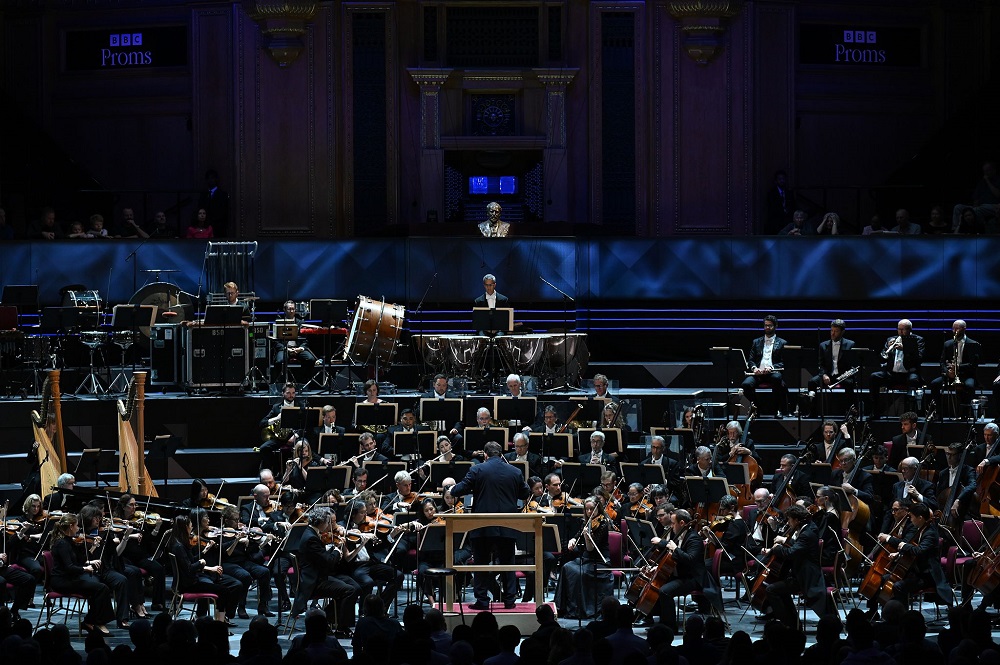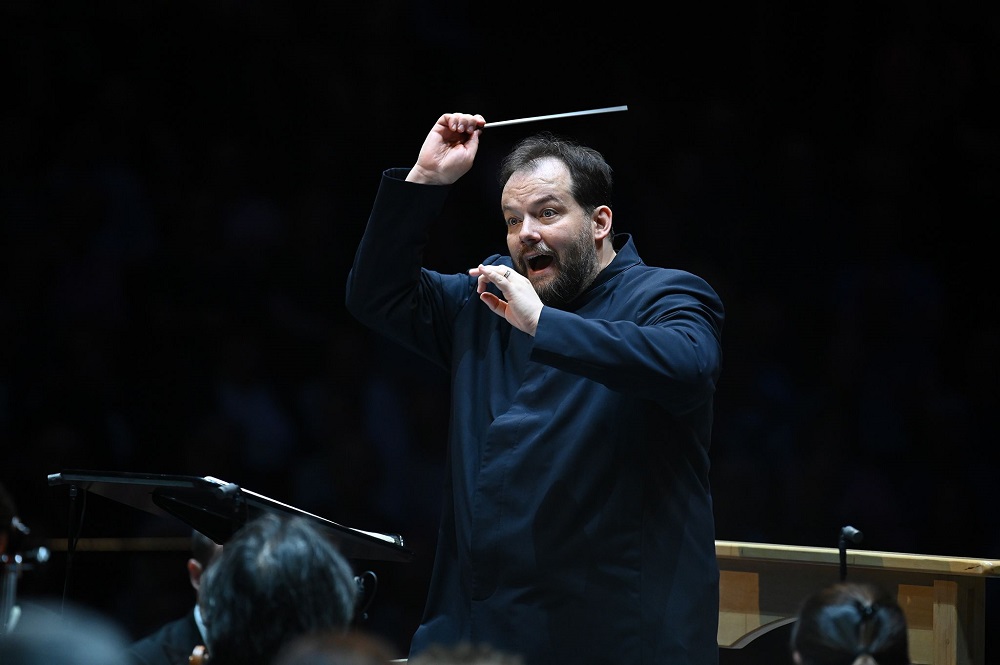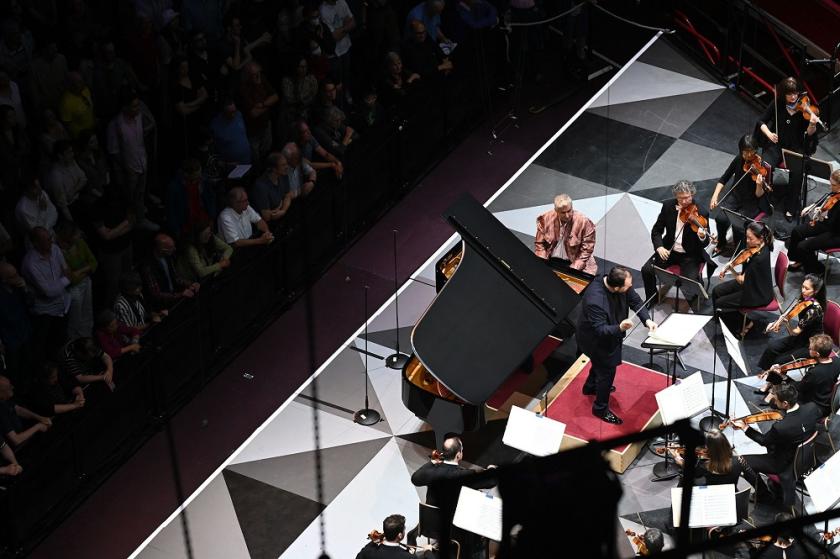Funfairs and dance music, old world and new, should have guaranteed a corker of a second Prom from the Boston Symphony Orchestra with its chief conductor, Andris Nelsons. Glitter it did; but wit, drive and violence took a back seat to showcase sophistication, at least from where I was sitting in the hall (always a necessary qualification)
If Nelsons seems to have lost the spark of his vintage days with the City of Birmingham Symphony Orchestra, his polish fits the classy Boston band very well – there’s little of the brave new brashness of the New York Philharmonic from these players, though the veteran brass can turn it on when needed. We expected exquisite wind playing, and got it in some unlikely places: the backstage shenanigans of Stravinsky’s sad puppet Petrushka and his love rival were almost too beautiful, phrases so elegantly tapered, especially when it came to the clashing clarinets. The piano which plays such a major role in "Petrushka's Room" would have lent more acerbity had it been placed further forward; and one day we'll have the role taken by the soloist in the evening's piano concerto (though Vytas Baksys did a perfectly fine job).  Petrushka is a score which looks back much less to fin de siècle Russian opulence than its predecessor, The Firebird, but you wouldn’t have known that here (and curiously Nelsons chose the 1946/7 revision, not the lusher 1911 original; it still sounded opulent). Perhaps not surprisingly, the last of the ensembles in the second Shrovetide Fair scene, the strutting, soaring Coachmen’s Dance, was a highlight. And at least we got the full score; the last time I heard Petrushka at the Proms, I took the six-year-old son of a friend and had told him all about Petrushka’s ghost thumbing his nose from the puppet-theatre roof – but we didn’t get it; Jiří Bělohlávek stopped short before the scuffle and murder, using the concert ending surely meant only for highlights. Said child loved Martinů’s Concerto for Two Pianos more; but none of last night's music seemed to enthral the little girl knitting two rows in front last night.
Petrushka is a score which looks back much less to fin de siècle Russian opulence than its predecessor, The Firebird, but you wouldn’t have known that here (and curiously Nelsons chose the 1946/7 revision, not the lusher 1911 original; it still sounded opulent). Perhaps not surprisingly, the last of the ensembles in the second Shrovetide Fair scene, the strutting, soaring Coachmen’s Dance, was a highlight. And at least we got the full score; the last time I heard Petrushka at the Proms, I took the six-year-old son of a friend and had told him all about Petrushka’s ghost thumbing his nose from the puppet-theatre roof – but we didn’t get it; Jiří Bělohlávek stopped short before the scuffle and murder, using the concert ending surely meant only for highlights. Said child loved Martinů’s Concerto for Two Pianos more; but none of last night's music seemed to enthral the little girl knitting two rows in front last night.
It’s impossible not to love Gershwin’s Piano Concerto, even when the interpretation falls short of jazzy drive stitching all those glorious themes together. Jean-Yves Thibaudet suited the general elegance well, with twinking roulades and a nice element of introspection, but there wasn’t enough locomotion (incidentally, I link the work to the world of the funfair because back in the 1980s I’ll swear I dreamt the whole of the finale to the visuals of a rollercoaster ride). The star here was principal trumpeter Thomas Rolfs (I presume) singing the blues in the slow movement, where the Chinese boxes eventually reveal one of the greatest melodies ever composed. It was very much Rolfs' evening; Petrushka's cry, often in league with his immediate colleague, never split, while the Ballerina's solo accompanied by the crispest of side drums, was suitably cocky. Dances framed the evening. Folk around me left in droves before catastrophe could strike in the form of Ravel’s La Valse at the end; they missed Nelsons’ finest display of rubato and control, plus a gauzy glimpse of the Bostoners’ continuation of the French tradition for which it became famous. I’m not sure if you just listened to the opening sequence without context you’d guess it was anything more than American in the wider sense, but Carlos Simon’s four numbers are homages to Black American routines: Ring Shout, Waltz, Tap And Holy Dance. The manner is more beguiling than the matter, but brass and percussion had a fine showcase for their talents. You did have to wonder about the lack of African-American input in the orchestra itself – I may be wrong, of course, since visuals can deceive – or the absence of women among the percussion, trumpets and trombones. But those roles were all consummately taken, so the old-style image had its virtues.
Dances framed the evening. Folk around me left in droves before catastrophe could strike in the form of Ravel’s La Valse at the end; they missed Nelsons’ finest display of rubato and control, plus a gauzy glimpse of the Bostoners’ continuation of the French tradition for which it became famous. I’m not sure if you just listened to the opening sequence without context you’d guess it was anything more than American in the wider sense, but Carlos Simon’s four numbers are homages to Black American routines: Ring Shout, Waltz, Tap And Holy Dance. The manner is more beguiling than the matter, but brass and percussion had a fine showcase for their talents. You did have to wonder about the lack of African-American input in the orchestra itself – I may be wrong, of course, since visuals can deceive – or the absence of women among the percussion, trumpets and trombones. But those roles were all consummately taken, so the old-style image had its virtues.














Add comment